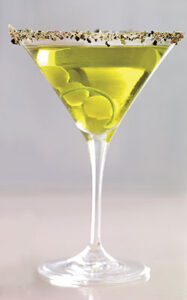
IDENTITY ISSUES
Every runner has an eating personality. Learn how to make the most of yours.
By Ashley Gartland
From the August 2010 issue of Runner’s World
Most runners love eating almost as much as running, even if they don’t go about it the same way. Some diligent souls keep track of every gram of carbohydrate and protein that passes their lips. Others are so consumed with work, kids, and training that they grab whatever seems healthy enough to consume on the fly.
Of course, there’s no single right way to eat well. Each approach has its own merits and drawbacks. The key to fueling your body and running your best, says San Diego-based nutritionist Tara Coleman, is to understand your tendencies, so you can build on healthy choices and adjust not-so-good-for-you habits. Whether you graze every few hours or eat the same three meals every day, here’s how to tweak your diet so it better meets your nutritional—and running—needs.
THE REACTIVE EATER
“Reactive eaters listen to their bodies,” says Coleman, “eating when hungry and what they crave.” That’s good because it means you stop eating when you’re full, reducing your risk of consuming too many calories and gaining weight. But when overwhelmed by work, family, or training, reactive eaters choose whatever foods are close when hunger hits, which sometimes means not-so-healthy fare.
EAT SMARTER Your diet will benefit from some planning, says Coleman. Cook extras of a dish you can eat cold so it’s ready when you need it (try whole-grain pasta with vegetables). Stock your gym bag, desk, and car with carb-and-protein snacks (sturdy fruit, like apples, and peanut-butter and trail-mix packs). On the road, skip the chicken patty at the drive through and get the marinated, grilled chicken with roasted veggies in the prepared foods section at the supermarket.
THE RESTRICTIVE EATER
You want to stay lean to run your best, so you look for ways to trim calories and choose low-fat foods. The problem is that restrictive eaters often don’t eat enough, or they cut out too much fat out of fear of gaining weight, says Alison Ozgur, R.D. Big mistake, as fats help reduce injury risk. Another drawback? A recent study in Psychosomatic Medicine found that closely monitoring calories raises stress levels.
EAT SMARTER Once a week, forgo restrictions, says Coleman. Eat when you’re hungry and what you crave; then take note of how you feel running. You may realize foods you avoided actually energize you during workouts. This can help you start to think of eating in a positive light—as a way to fuel your running—and reduce feelings of stress. Make healthy fats part of most meals, says Ozgur, since they improve vitamin absorption. Try mixing walnuts in oatmeal and adding avocado to wraps.
THE HABITUAL EATER
As a creature of habit, you never miss a meal. That’s good, because a study conducted by researchers in Sweden in 2008 found that eating meals regularly lowers your risk of developing insulin resistance and metabolic syndrome (a condition that can lead to the onset of diabetes and heart disease). But if you don’t change up the foods you eat, says Coleman, you could develop a nutrient deficiency.
EAT SMARTER A few times a week, substitute similar but different-for-you foods, says Monique Ryan, R.D., author of Sports Nutrition for Endurance Athletes. If you normally eat corn flakes and a banana for breakfast, try a hot multigrain cereal (for a fiber boost) topped with antioxidant-rich berries. In a grilled-chicken rut? Make a lean flank steak, which contains more iron. Try a new recipe every other week to liven up your taste buds.
THE GRAZING EATER
Rather than sit down to three squares a day, grazers snack every few hours. So they’re fueled before a run, says Coleman, and they refuel quickly postrun, helping speed recovery. But grazers can eat too many or too few calories if they don’t watch portion sizes. And while they rely on convenient options (granola bars, pretzels) these foods often lack protein.
EAT SMARTER “Look at the day as a whole and then work backward,” says Coleman. She suggests calculating your daily calorie needs (on Web sites such as nutritiondata.com). Evenly divide those calories through the day. If you need 1,800 calories and like to eat six times, make six 300-calorie snacks with a mix of carbs and protein. Have whole-grain toast with almond butter, an apple and two pieces of string cheese, or half a turkey sandwich.
THE WELL-PLANNED EATER
Detail-oriented, you keep a food log and stick to a meal plan. But adhering too closely to that regimen can detach you from eating based on how your body feels. Planners eat something because their schedule says they have to, says Coleman, not necessarily because they want to.
EAT SMARTER Keep that food log—but write down what you eat and how you feel before and after meals and workouts, says Coleman. You may discover you need that postrun protein shake only after your toughest runs—not every run. On days you work out in the evening, you may find your usual dinner doesn’t fill you up and you need more calories. Being in tune to those feelings will help you create a more flexible eating plan that better meets your needs.
THE INDULGENT EATER
“Running is an accomplishment,” says Coleman, “but some think it means they can eat everything they want.” It is okay to indulge in high-calorie or high-fat fare, but regularly overdoing it will hurt your health and running by adding (or preventing you from losing) extra pounds.
EAT SMARTER If you like a sweet treat every day, you don’t have to give that up, says Coleman. But you do have to keep the portion size in check—a single square of fine dark chocolate rather than a whole box of cookies. If you find that’s just not satisfying, you can still have the three-scoop sundae—just make it a once-a-week or so indulgence, rather than daily.

